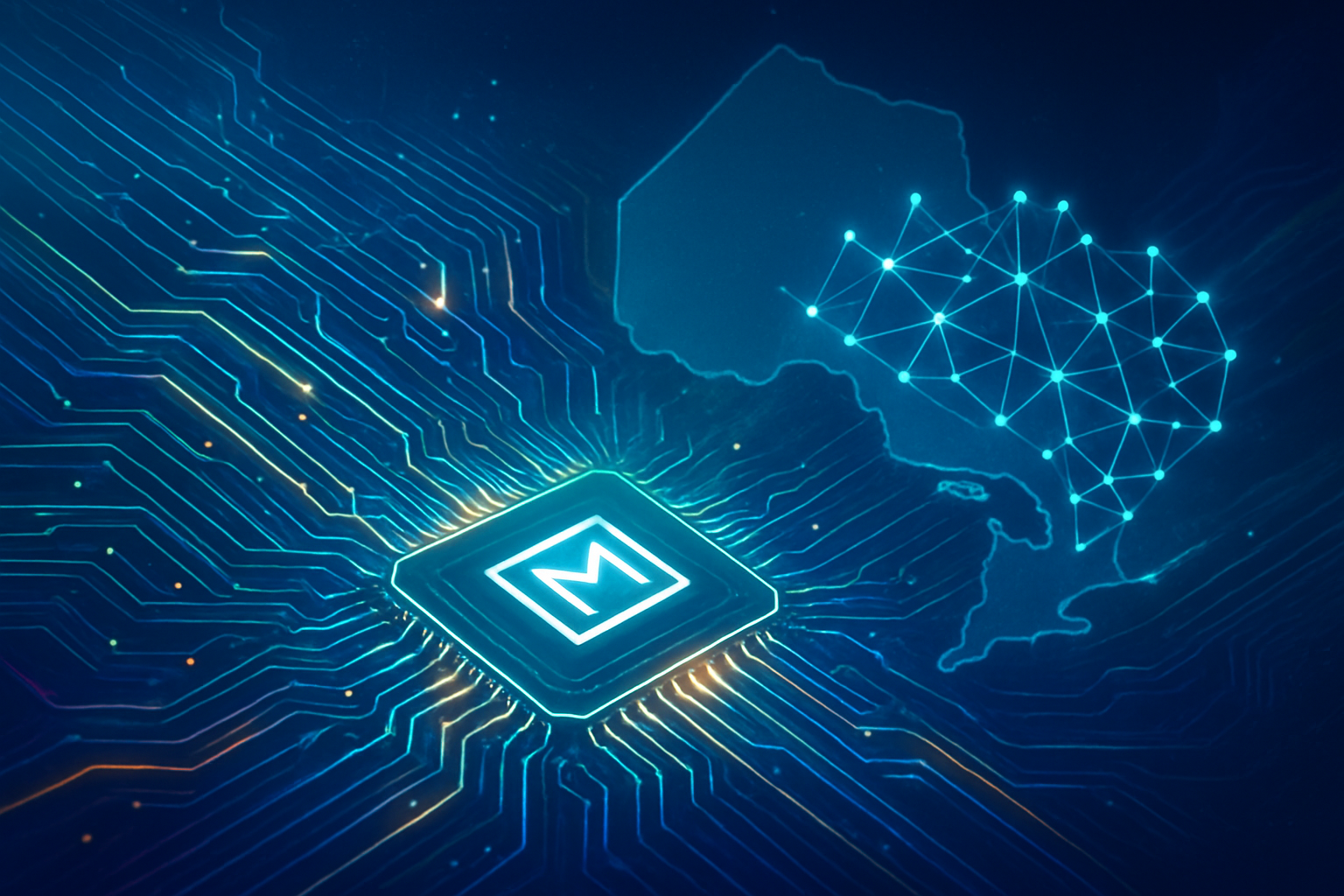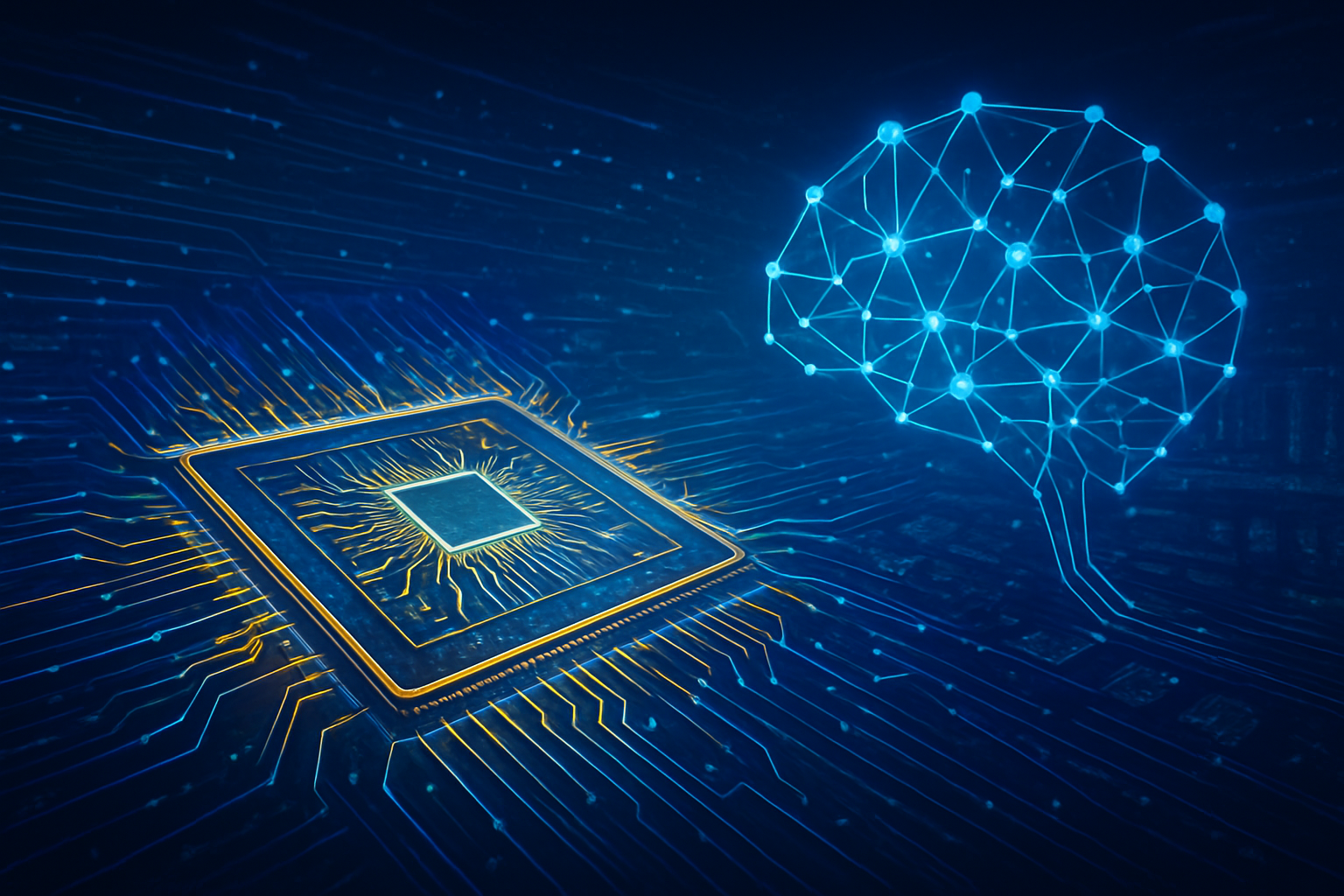Ulverston, UK – December 3, 2025 – BGF, a leading growth capital investor, has announced a multi-million-pound investment in Citrus-Lime, a Cumbrian-based provider of cloud retail systems. This significant funding is poised to accelerate Citrus-Lime's ambitious growth strategies, focusing on technological advancements and an aggressive expansion into both domestic and international markets, particularly the United States. The investment underscores a broader industry trend towards empowering independent retailers with sophisticated, integrated technology solutions, laying a crucial foundation for the increasing integration of artificial intelligence in everyday retail operations.
The infusion of capital into Citrus-Lime, a company specializing in end-to-end cloud retail solutions for niche sectors such as cycling, equestrian, running, and outdoor sports, signifies BGF's confidence in high-growth Software-as-a-Service (SaaS) businesses. This move is expected to have an immediate and substantial impact, allowing Citrus-Lime to further refine its flagship 'Cloud POS' platform and enhance the support experience for its hundreds of independent retail clients. In an era where independent businesses often grapple with competing against larger enterprises, this investment aims to level the playing field by providing access to cutting-edge tools that streamline operations, improve customer experience, and boost profitability.
Citrus-Lime's Cloud POS: A Technical Deep Dive into Integrated Retail
Citrus-Lime's 'Cloud POS' platform stands out as an "End-to-End Retail Solution" meticulously designed for the unique demands of independent retailers. Accessible from anywhere with an internet connection and featuring an offline mode for business continuity, the platform integrates various critical business functions into a single, cloud-based system, moving beyond fragmented, legacy approaches.
Technically, Cloud POS offers robust core POS functionality supporting unlimited items, users, and customer records. Its innovative Supplier Integration Module (SIM) allows for rapid product imports from suppliers, real-time stock checks, and the ability to sell items from supplier inventory both in-store and online, effectively creating a "pseudo-warehouse." For bike retailers, a specialized Workshop Module efficiently manages jobs, schedules appointments, and tracks parts, enhancing communication and fostering repeat business. The platform boasts seamless integrated e-commerce, automatically uploading products, displaying real-time stock levels, supporting Click & Collect, and incorporating finance offerings. Powerful Cloud Reports provide actionable data on sales and inventory, aiding informed decision-making, while real-time stock control prevents overselling across single or multiple store locations.
Recent updates, particularly 'Cloud POS 2.0' and a comprehensive Back Office overhaul, have delivered a cleaner, more intuitive user interface optimized for tablets, allowing retailers to build orders on the shop floor. A significant rebuilding of the entire back end has resulted in substantial performance improvements, with tasks like checking orders becoming 60% quicker and creating purchase orders 70% faster. The platform also offers an interactive API for data updates, a data export API for business intelligence, a C# wrapper, and webhooks, alongside integrations with accounting software like Xero, payment solutions like Klarna, and various courier services.
What truly differentiates Citrus-Lime is its deep industry specialization. "Coded from the ground-up" based on over a decade of feedback from the cycle sector, its features directly address the specific needs of bike shops. This unified, cloud-native, and mobile-flexible solution, combined with advanced inventory and supplier management, provides a significant advantage over generic POS systems. Initial reactions from industry users to the recent overhaul have been overwhelmingly positive, with users praising the new interface as "very intuitive, modern and much neater" and noting the significant efficiency gains. The investment from BGF, following earlier backing from the Northern Powerhouse Investment Fund (NPIF), has been widely commended for facilitating continuous innovation and strengthening Citrus-Lime's position in the UK retail technology market.
Market Ripple: How BGF's Investment Shapes Retail Tech and AI Integration
BGF's multi-million-pound investment in Citrus-Lime is set to send ripples across the retail technology sector, influencing competitors, tech giants, and the broader integration of AI in commerce.
For other retail tech companies, particularly those serving independent retailers, this investment intensifies competition. With enhanced capital, Citrus-Lime can accelerate product development and expand its market reach, pressing existing providers to offer more integrated and specialized solutions. This could drive market consolidation, as smaller, less-funded competitors may struggle to keep pace with innovation. The emphasis on comprehensive, cloud-based solutions suggests that integrated offerings will become the benchmark for competitiveness.
Tech giants, particularly in e-commerce and cloud services, will experience varied impacts. E-commerce platforms like Shopify (NYSE: SHOP) or Magento may face increased competition in the independent retailer segment within Citrus-Lime's specialized vertical markets. However, cloud service providers such as Amazon Web Services (NASDAQ: AMZN), Microsoft Azure (NASDAQ: MSFT), and Google Cloud (NASDAQ: GOOGL) are likely to benefit, as Citrus-Lime's global expansion will increase demand for underlying cloud infrastructure and services. Furthermore, as Citrus-Lime integrates more advanced AI capabilities, it will likely leverage the sophisticated data analytics and AI services offered by these giants.
Citrus-Lime gains significant competitive advantages, including a substantial capital infusion for technology development and international expansion, particularly into the US, Europe, and Australia. Access to BGF's strategic guidance and extensive network is also crucial for navigating growth. Its niche specialization and end-to-end integrated solution offer a compelling proposition against fragmented or generic offerings, potentially disrupting legacy POS systems and less comprehensive e-commerce platforms by reinforcing the market shift towards unified cloud-native platforms.
Crucially, this investment aligns with a broader and significant trend towards AI-driven retail solutions. BGF itself has shown a clear interest in artificial intelligence, with recent organizational reshuffles aimed at boosting AI and retail tech competitiveness. A late 2024 BGF survey of its portfolio companies revealed an overwhelmingly positive reception to AI among SME founders, indicating strong market demand for AI adoption. While Citrus-Lime's immediate announcement emphasizes general "technology development," the context of BGF's strategic focus strongly suggests that future enhancements will incorporate advanced AI features, such as predictive analytics for inventory, personalized customer experiences, and streamlined operational efficiencies, signaling a broader move towards more intelligent, AI-powered retail solutions.
The Broader Canvas: Significance, Concerns, and AI's Retail Trajectory
BGF's multi-million-pound investment in Citrus-Lime holds profound implications for the broader retail technology and AI landscape, particularly in empowering independent retailers to thrive in an increasingly digital and AI-driven market. This strategic move perfectly aligns with several dominant trends while also highlighting important considerations.
The investment underscores the accelerating shift towards unified commerce and omnichannel experiences. By providing an integrated platform for POS, e-commerce, stock, and customer data, Citrus-Lime enables independent retailers to offer the seamless shopping experiences once exclusive to large enterprises. This also lays the essential groundwork for AI-powered personalization and data analytics. While not explicitly branded as AI-powered yet, Citrus-Lime's focus on collecting and centralizing customer data creates the rich datasets necessary for future AI integration – a critical trend for 2025 where retailers leverage AI to analyze customer behavior and tailor offers. The move further solidifies the trend of cloud-based solutions and digital transformation, offering scalability, cost-efficiency, and enhanced security for smaller businesses.
The direct impact on independent retailers is significant: it helps level the playing field, providing sophisticated tools to compete with larger chains. It drives growth and expansion by making advanced retail technology accessible globally and improves customer experience through centralized data and streamlined operations.
However, this wider adoption of retail tech and AI also raises potential concerns. Data privacy is paramount; consumers are increasingly wary of how their data is collected and used by AI systems, demanding transparency and robust protection. Market concentration is another worry, though specialized solutions like Citrus-Lime can counteract this by democratizing advanced tech for independents. There are also concerns about algorithmic bias and opaque systems, as the complexity of AI can lead to non-transparent decision-making.
Comparing this to previous milestones, the current wave of retail tech innovation, fueled by AI, echoes the early automation of the 1970s (barcodes, early POS), the rise of e-commerce and rudimentary AI in the 1990s (Amazon's recommendations, first cloud POS in 2002), and the mainstreaming of AI/ML in the 2010s. Today, we are witnessing a "generative AI" revolution, promising to disrupt retail further through personalized offers, advanced chatbots, and content creation. BGF's investment in Citrus-Lime represents a crucial step in this trajectory, democratizing these advanced capabilities and empowering niche independent retailers to build sustainable operations against the "big boys of retail."
The Horizon: Future Developments and AI's Unfolding Retail Narrative
BGF's multi-million-pound investment marks a significant inflection point for Citrus-Lime, setting the stage for substantial future developments that will shape both the company's trajectory and the broader retail technology landscape, particularly concerning AI integration.
In the near term, Citrus-Lime is expected to focus on further refining its core Cloud POS platform. This includes continuous enhancements to its mobile-first user interface for both Back Office and POS, aiming for faster load times and an even more intuitive experience. Increased customer control over e-commerce sites, potentially through a lightweight headless CMS, and a focus on enhanced reliability via "Cloud First Deployments to Azure" and extensive programmatic testing are also anticipated. Strengthening customer support services will remain a priority.
Longer-term, the investment will facilitate significant technological advancements and global expansion, with a particular emphasis on the US market. Citrus-Lime is strategically positioned to integrate advanced AI capabilities into its platform, building upon existing features like its "AI Order Confirmation Processor" that automates purchase order creation. Potential new applications and use cases leveraging AI in retail tech are vast: hyper-personalization and predictive customer engagement through analysis of purchase history and real-time behavior; advanced demand forecasting and inventory optimization to minimize waste; AI-powered customer support and conversational commerce via intelligent chatbots; dynamic pricing based on real-time factors; and enhanced fraud detection. Further omnichannel integration and exploration of generative AI for automating product descriptions, marketing content, and even virtual fitting rooms are also on the horizon.
However, the broader retail tech and AI landscape faces significant challenges. Data quality and management remain a major hurdle, with data silos hindering actionable insights. The cost and complexity of AI implementation, coupled with skill gaps and workforce resistance, pose considerable barriers. Furthermore, lack of executive support and the need for a balanced approach between AI and human interaction for customer adoption are critical considerations.
Experts predict a truly transformative period for retail driven by AI. We can expect AI and machine learning to fundamentally reshape supply chains, driving efficiency and adaptability. Hyper-tailored customer experiences will move beyond basic personalization, with AI enabling immersive shopping journeys. Consumers themselves are predicted to increasingly use AI for research and product discovery. Operationally, AI will enhance predictive maintenance, quality control, and inventory forecasting. Crucially, 2025 is expected to see retailers scale AI projects from pilots into production, embedding the technology into core business operations. The rise of conversational commerce via AI agents and generative AI redefining creativity are also anticipated. Ultimately, AI is poised to become an indispensable "retail operating system," integral to all facets of retail, with the future centering on hyper-personalization, advanced security, democratized data insights, and smarter tools to boost engagement and sales.
A New Chapter for Independent Retail: The AI-Powered Future Unfolds
BGF's multi-million-pound investment in Citrus-Lime marks a pivotal moment, not just for the Cumbrian retail tech provider, but for the wider landscape of independent retail and the accelerating integration of artificial intelligence into commerce. This strategic funding is a powerful endorsement of Citrus-Lime's integrated cloud retail solution, signaling a clear intent to empower smaller businesses with sophisticated tools previously the domain of large enterprises.
The key takeaways are clear: this investment will fuel Citrus-Lime's rapid growth and international expansion, particularly into the lucrative US market, while simultaneously driving significant technological advancements in its 'Cloud POS' platform. The focus remains on providing an end-to-end solution that seamlessly integrates point-of-sale, e-commerce, real-time stock management, and customer data – a foundational architecture essential for leveraging the full potential of AI.
The significance of this development in retail technology and AI history cannot be overstated. Citrus-Lime's platform creates the rich, unified datasets that are the lifeblood of AI-driven personalization, predictive analytics, and optimized inventory management. It actively contributes to democratizing advanced retail tech, enabling independent retailers to offer sophisticated omnichannel experiences that can compete with industry giants. While not explicitly an "AI company" in its immediate branding, Citrus-Lime's enhanced platform is poised to become a vital conduit for AI's operational deployment in niche retail sectors.
Looking ahead, the long-term impact promises to strengthen the competitiveness and resilience of independent retailers globally. By enabling them to efficiently manage operations and deliver superior customer experiences, Citrus-Lime, backed by BGF, is fostering innovation within specialized markets and potentially inspiring similar advancements across other niche segments. The evolution towards more "agentic AI" that automates tasks like forecasting and pricing is a clear trajectory for such integrated platforms.
In the coming weeks and months, industry observers should keenly watch for Citrus-Lime's announcements regarding specific AI features or advanced analytics functionalities integrated into Cloud POS. Updates on its US market expansion, new strategic partnerships, and BGF's periodic portfolio insights will offer valuable indicators of the investment's early success and the platform's ongoing evolution. Ultimately, this investment is a testament to the growing recognition that technology, particularly AI, is not just a tool for large corporations, but a transformative force capable of empowering independent businesses to thrive in the complex, data-driven retail environment of the future.
This content is intended for informational purposes only and represents analysis of current AI developments.
TokenRing AI delivers enterprise-grade solutions for multi-agent AI workflow orchestration, AI-powered development tools, and seamless remote collaboration platforms.
For more information, visit https://www.tokenring.ai/.









